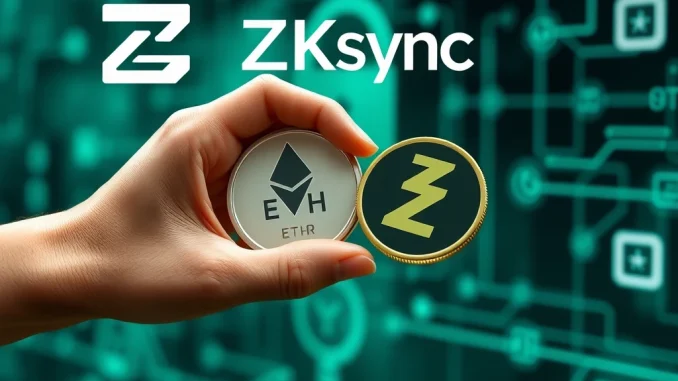
Big news is circulating in the ZKsync ecosystem following a crucial community vote. The zero-knowledge rollup project, ZKsync, has received community approval for a significant proposal. This decision authorizes the ZKsync Security Council to take ETH that was successfully retrieved after the April exploit involving unclaimed airdrop tokens and convert it into ZK tokens. This move is set to reshape how these recovered funds are utilized within the ZKsync framework.
Understanding the ZKsync Exploit and Recovery
Back in April, the ZKsync ecosystem faced an incident involving unclaimed tokens designated for an airdrop. While the specifics of the exploit are complex, the core issue revolved around vulnerabilities that allowed unauthorized access to some of these funds. Fortunately, efforts to recover some of the affected assets were successful. The ETH discussed in the recent proposal represents a portion of these recovered funds. Deciding the best use for recovered assets is a critical step for any project aiming to restore confidence and strengthen its position after a security event like the ZKsync exploit.
Why Convert Recovered Ethereum?
The core of the approved proposal is the conversion of the recovered Ethereum (ETH) into ZK tokens. But why make this conversion? The rationale centers on integrating these recovered assets more directly into the ZKsync native economy. Converting ETH to ZK tokens means the funds can potentially be used for purposes that directly benefit the ZKsync ecosystem, such as contributing to a community-controlled treasury, funding grants for developers building on ZKsync, or supporting initiatives aimed at further securing and developing the network. It’s a strategic choice to leverage recovered external assets (ETH) to strengthen the internal, native asset (ZK tokens).
The Community Decision and What It Means for ZK Tokens
This wasn’t a unilateral decision; the proposal was put before the ZKsync community and received approval through the official voting mechanism. This highlights the decentralized governance aspirations of the project. The approval grants the ZKsync Security Committee the authority to manage the conversion process. According to official communications, the specifics regarding the method and timing of the ETH to ZK tokens conversion will not be publicly announced in advance. This deliberate lack of disclosure aims to prevent potential arbitrage opportunities and market manipulation that could arise if the conversion details were known beforehand. For holders of ZK tokens, this decision could potentially influence token supply dynamics and how recovered funds are channeled back into the ecosystem, impacting future development and growth initiatives.
Navigating the Market Impact: A ZKsync Perspective
The decision to convert recovered ETH into ZK tokens is not without its potential market implications. While the intent is to prevent manipulation through undisclosed timing, any significant conversion could still have an impact on the market price of ZK tokens, depending on the volume and execution strategy. The ZKsync Security Committee is tasked with navigating this delicate process, balancing the goal of utilizing recovered funds for ecosystem benefit against the potential for market volatility. This situation underscores the complexities involved in managing project treasuries and recovered assets in the fast-moving world of cryptocurrency.
Crypto News: Broader Implications of Ecosystem Decisions
This development is notable within the broader context of crypto news, particularly for Layer 2 solutions and token governance. It sets a precedent for how projects might handle assets recovered from security incidents, opting to reinvest them directly into their native token ecosystem rather than holding them in a more general asset like ETH. It highlights the growing importance of community governance in making significant financial and operational decisions for decentralized protocols. As the ZKsync Security Committee proceeds with the conversion, the crypto community will be watching to see how this strategy plays out and what impact it has on the ZKsync network and the value proposition of ZK tokens.
Summary: The ZKsync community has given the green light for a significant financial maneuver: converting ETH recovered from the April airdrop exploit into native ZK tokens. This decision, entrusted to the ZKsync Security Committee with undisclosed execution details to deter manipulation, aims to reintegrate these funds strategically back into the ZKsync ecosystem. While the conversion process remains private, the intent is to strengthen the network and potentially benefit ZK token holders by channeling recovered assets into project development and community initiatives. This move is a key development for ZKsync and provides an interesting case study in decentralized governance and post-exploit asset management in the crypto space.



